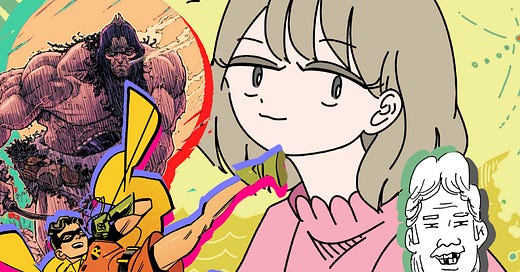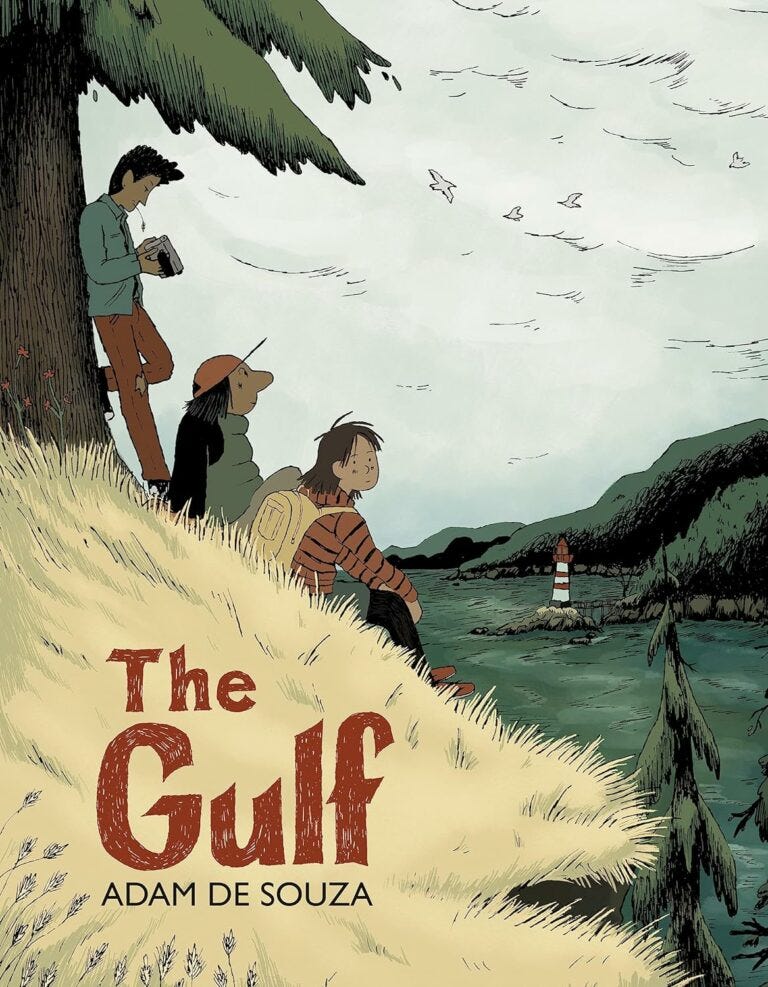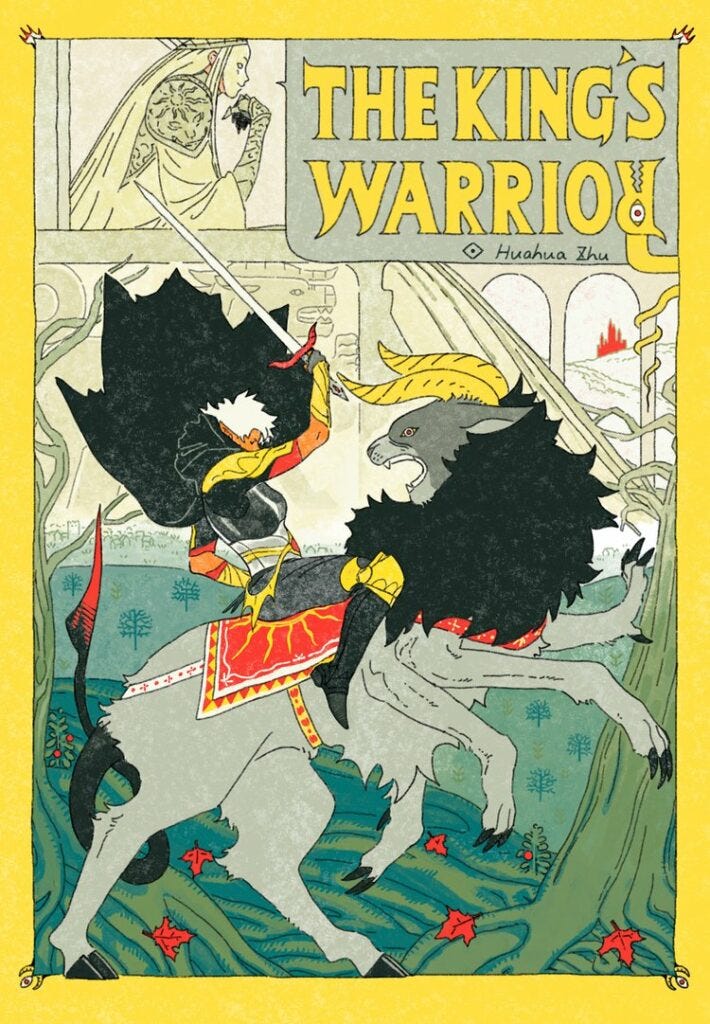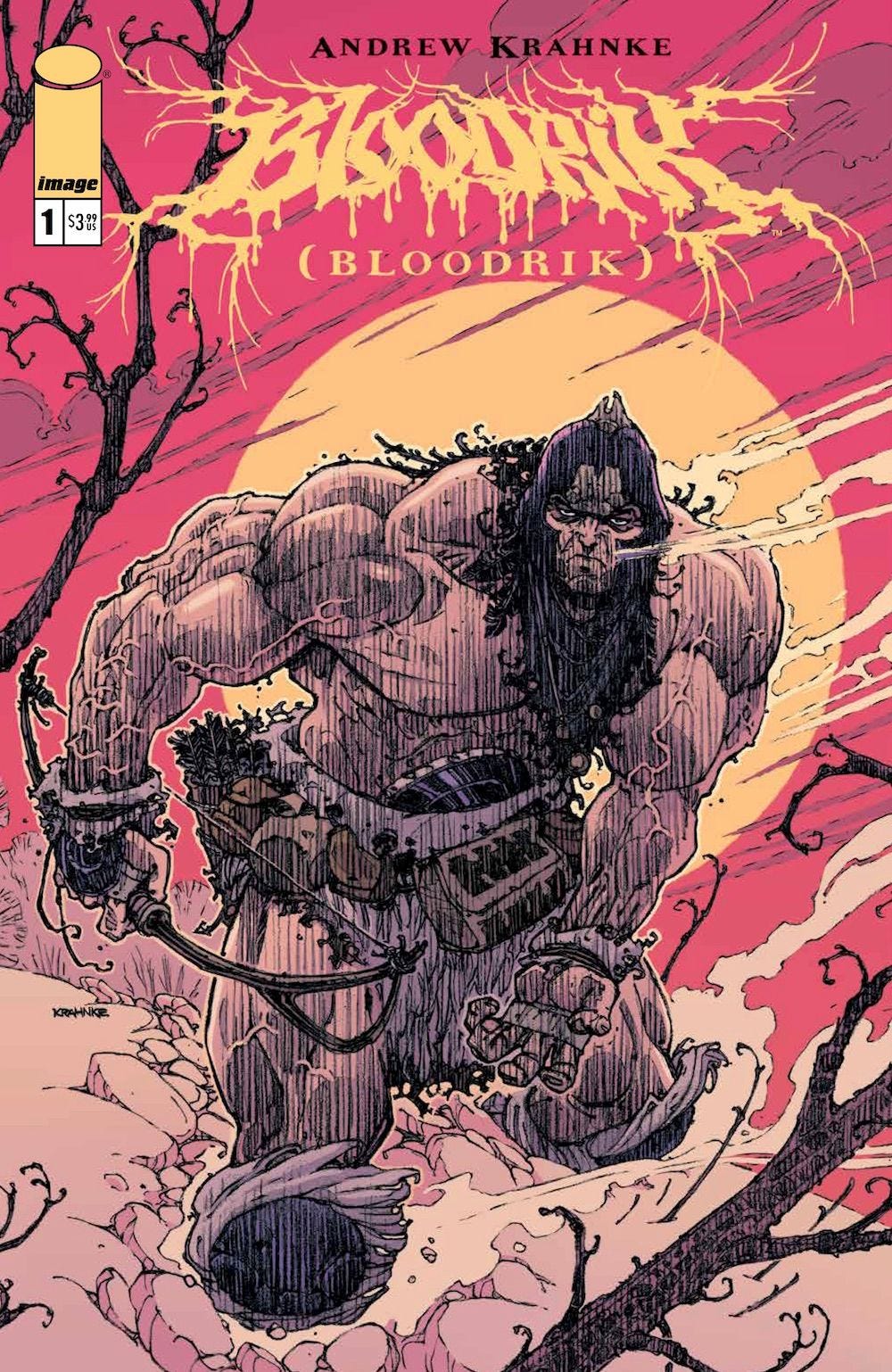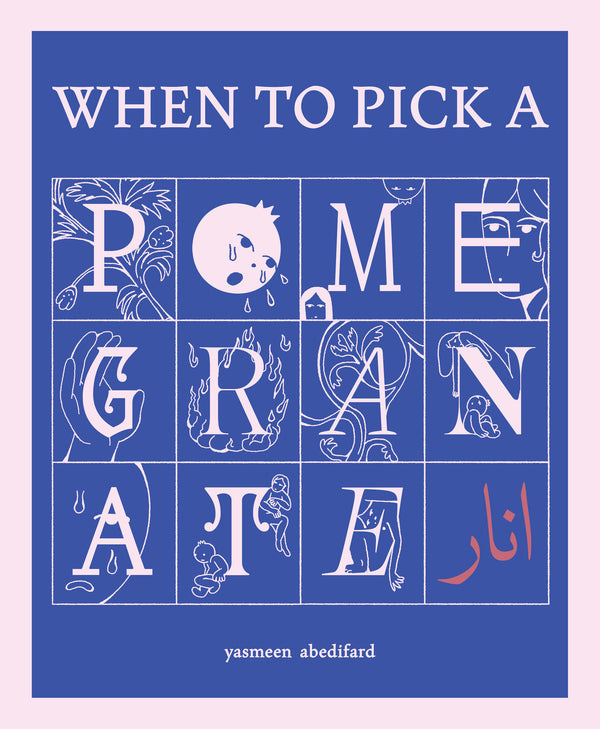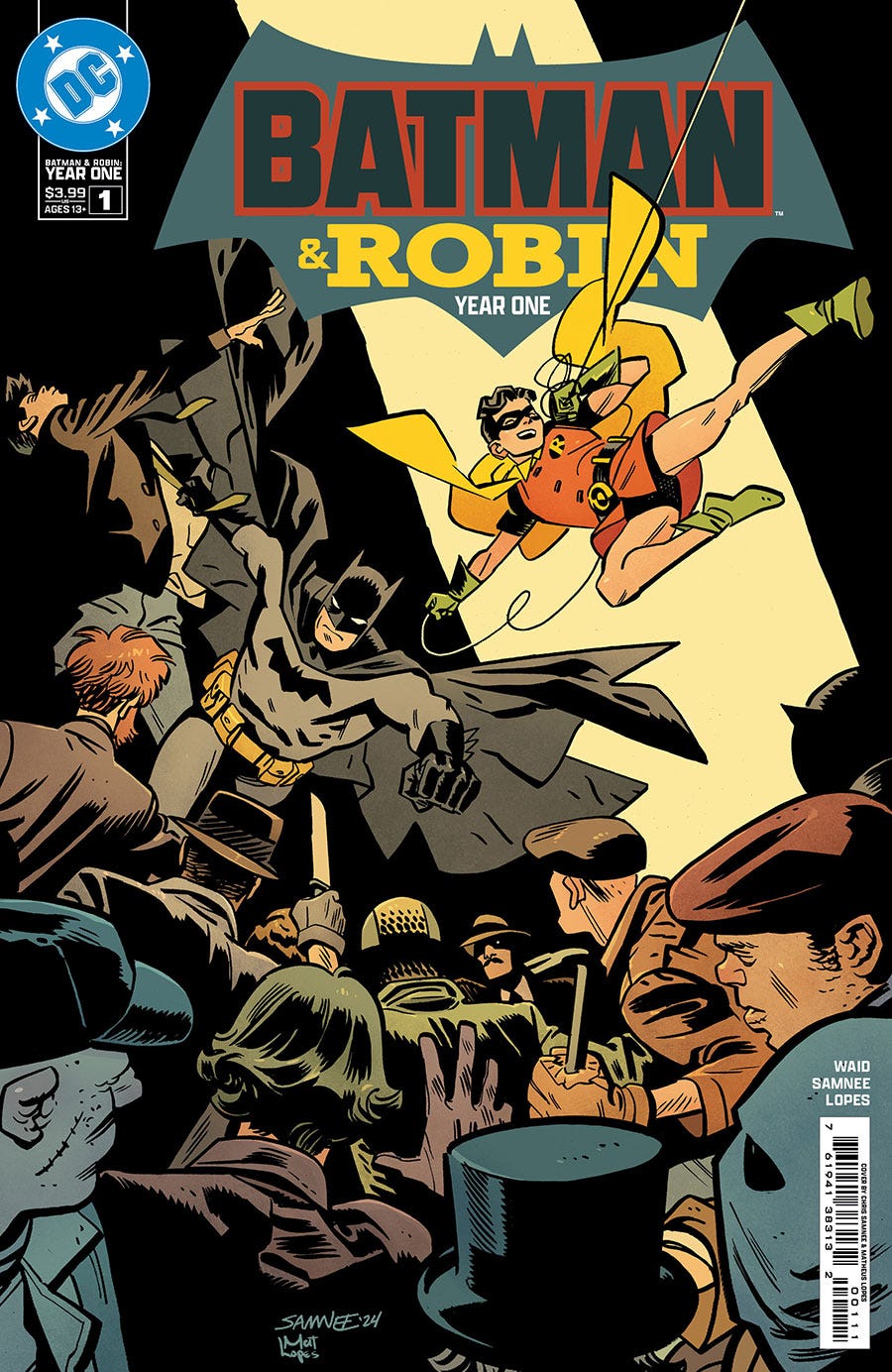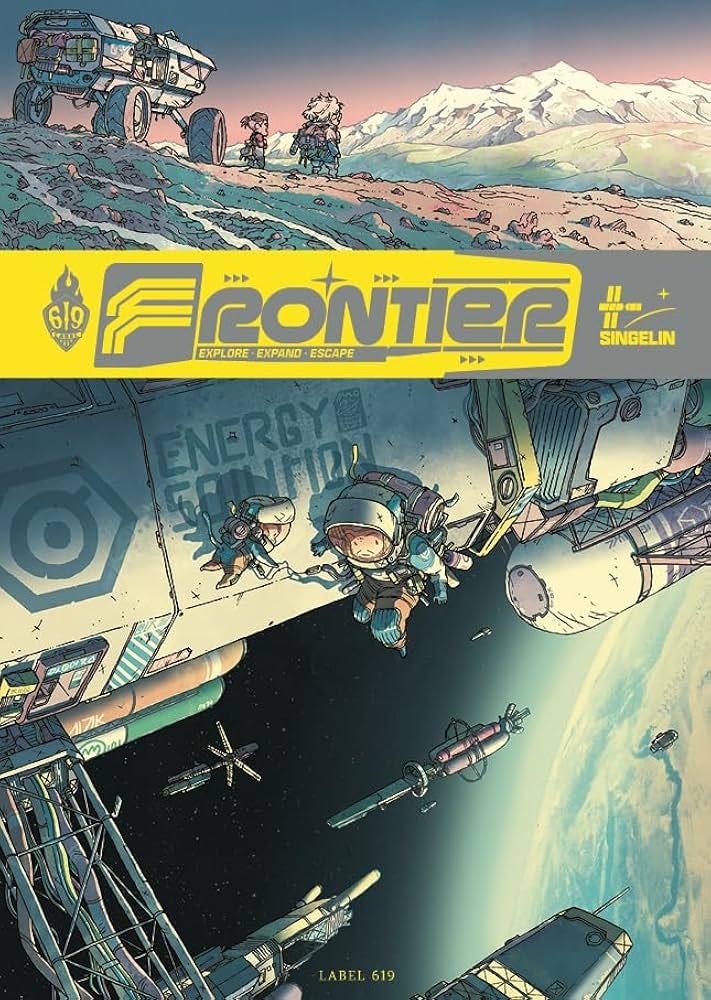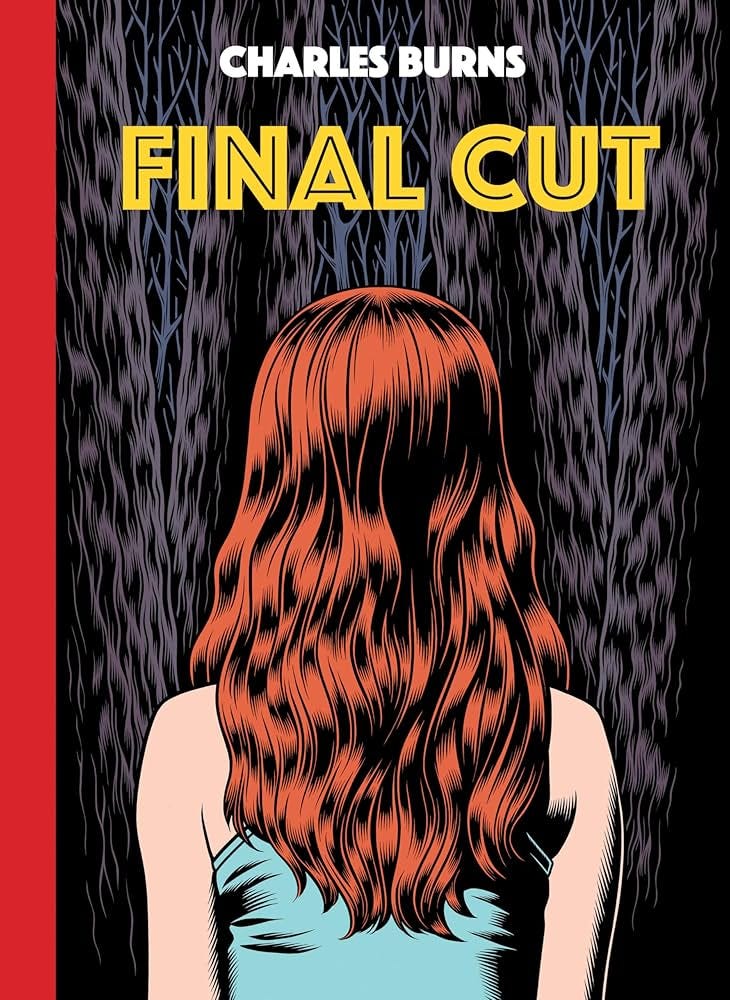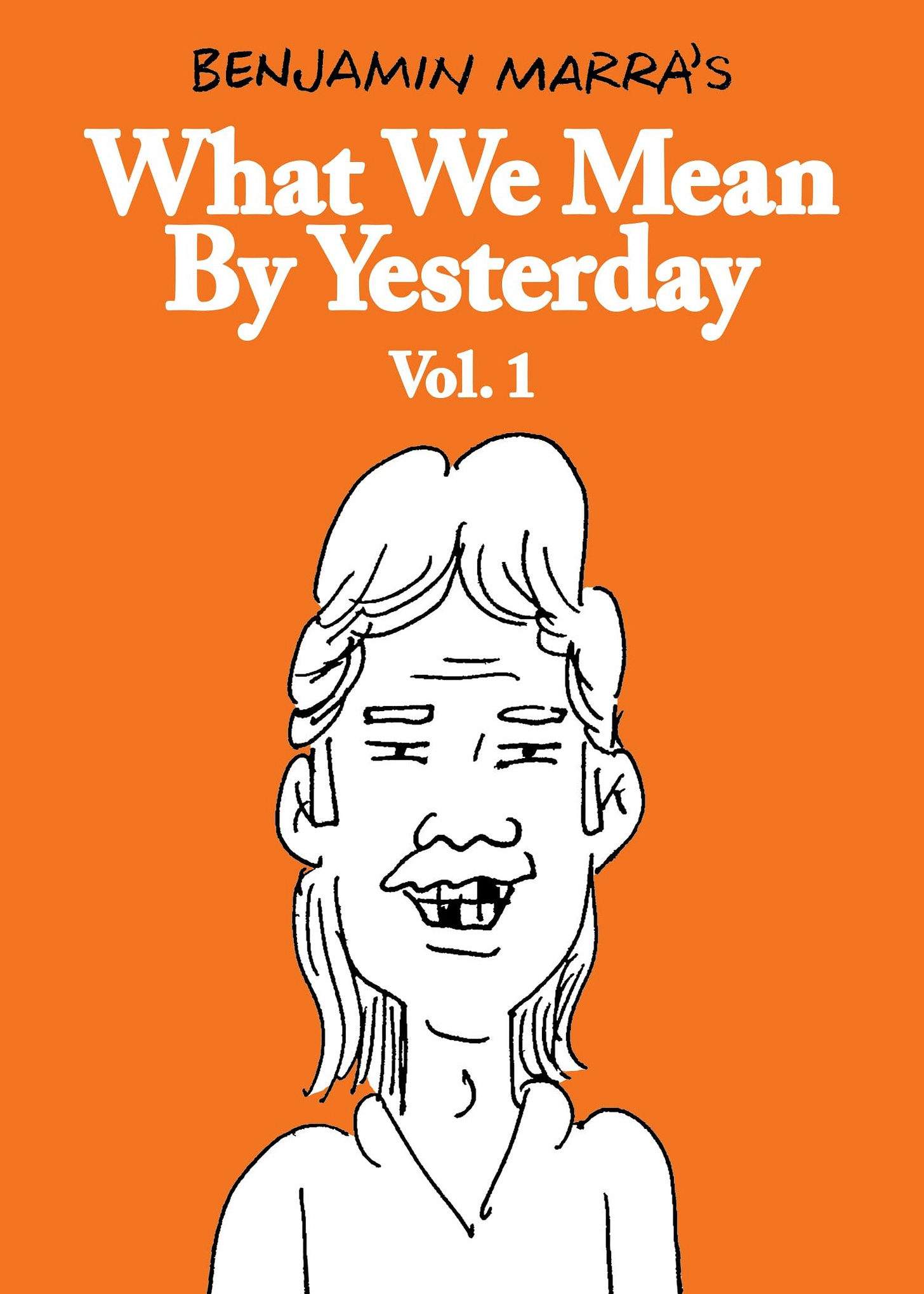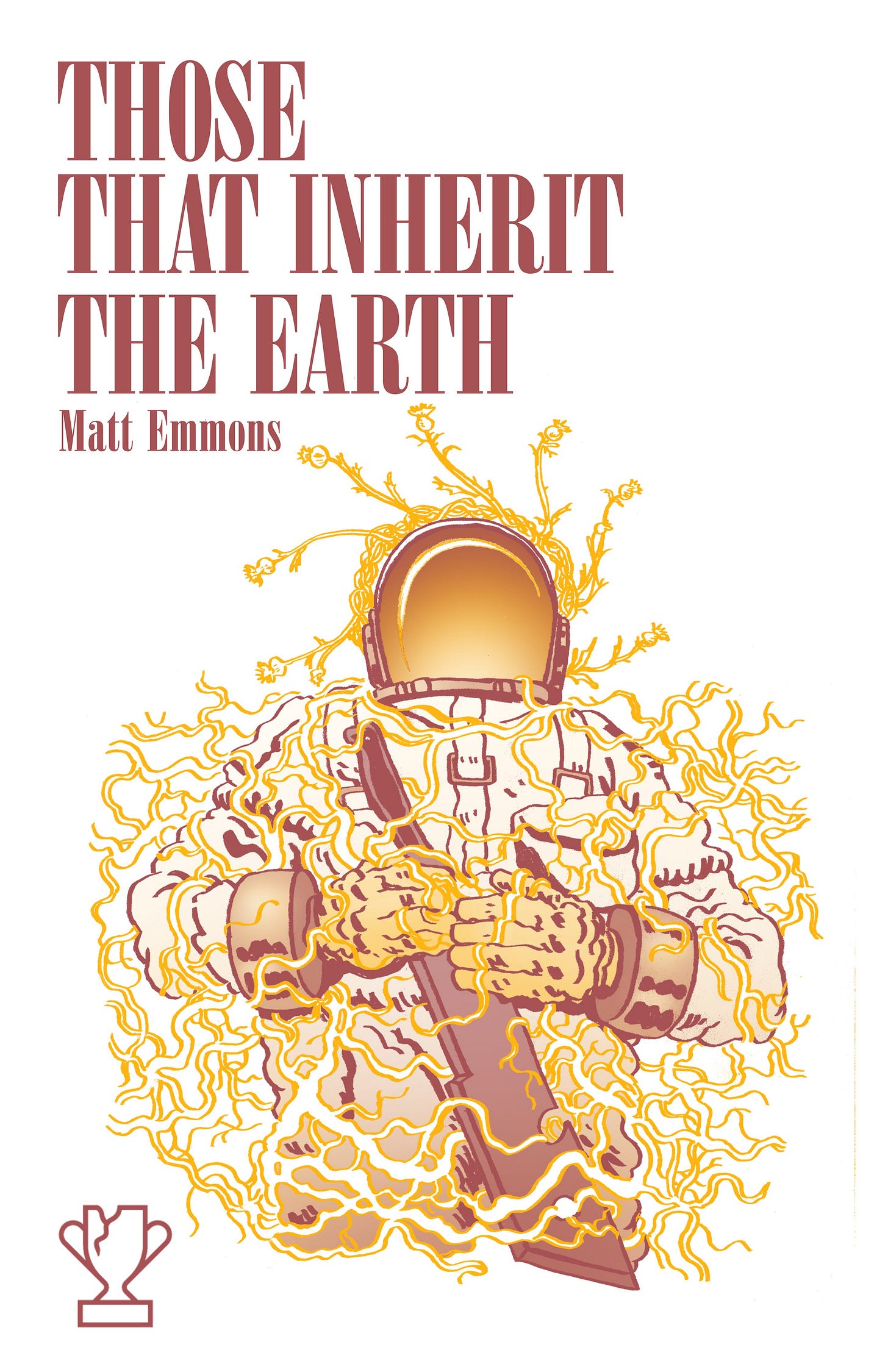These are the best comics of the year
2024 was the year for beguiling, introspective, and gnarly adventures.
The Gulf (Adam de Souza; Tundra Press)
The Criterion Collection kind of comics, and I’ll tell you why. The premise is deceptively relatable: everything sucks. The personal turmoil inside a totally normal kid with no desire to be a part of our awful, awful world plays out against a strikingly framed, lush, and rustic countryside. Instead of being everyday, it’s spectacular. Rendered with a light scribbly touch that enlivens the indie simplicity, excellent for depicting a book submersed in nature without compromising its dreaminess. The spot coloring is reminiscent of offset printing, Flatstock and The Bird Machine, stylized artful intention. It looks like a concert poster, something from Peow2, but is actually a YA book. In the vein of Is/Isn’t YA, it evokes Young Frances as much as Roaming. On the burden of living through tough times, it dares to suggest some options. — AOK (Buy it.)
The King’s Warrior (Huahua Zhu; Bulgilhan Press)
When I say old-school fantasy, I mean From Ritual to Romance. She rides her lionsteed in the name of the king, and so that she can free her brother. But where this story leads is to a far older place than the knights we’re accustomed to. With imagery to suit an epic. Blend of heart, humor, and horror, not unlike Hellboy. Something kind of funny and deeply eldritch happens, met with swift violence. Its unintended consequences are tragic and real. If you have ever wished for a whole comic of Terada’s Link’s Awakening concept art, here you go. This is a quest, so the journey is given a sweeping and grand visual character. The legendary romance look and the doomed fairy tale story come together as dragons, a bridge and a chasm, and a warrior on a far hill, contemplating. — AOK (Buy it.)
Bloodrik (Andrew Krahnke; Image Comics)
Putting it very mildly, Bloodrik, the minor barbarian epic from artist Andrew Krahnke, is about effort. The thrust of this saga is simple: the self-styled king of the woods, our guy Bloodrik, is hungry and sets off into the unknown to stalk his latest meal. Only food doesn't come easy. Nothing does, and before long, Bloodrik encounters far more setbacks and pratfalls than he originally bargained for. You can draw easy parallels from the frustrations of this hulking dumb-dumb to those of Krahnke, who, in his intro to this bracingly fleet but no less viscerally charged three-issue miniseries, confesses to letting creative frustration keep Bloodrik from seeing publication for over a decade. You read struggle on these pages; as 'Rik pushes through snow drifts, encounters mystical roadblocks, and shakes off a psychotropic mental fog, so too do you feel Krahnke push himself to create something for which he cares so deeply. Bloodrik is about effort, yes, and perseverance. And triumph. — JJ (Buy it.)
When to Pick a Pomegranate (Yasmeen Abedifard; Silver Sprocket)
A surreal thing, this book. As one chapter ends and the next begins, the turning of the page wholly transforms the book, as if by magic. Grey pages of living statues turn to red leaves smouldering with desire. The art consistently holds its style, but presentation follows an emotional lead from poem to poem. And what is a narrative, theoretically one thing — or two, woman and pomegranate — becomes many as the story goes on, an anthology. Despite their obscured identities, the ensnared provide perfect portraits of feeling. The story-cycle magic might be a curse, as no one seems to be able to escape being born again from the corpse of their past, transforming over and over from rot to hot, lust to disgust. A beautiful and bizarre new creative milestone for the medium. — AOK (Buy it.)
Batman & Robin: Year One (Mark Waid and Chris Samnee; colored by Mat Lopes and lettered by Clayton Cowles; DC)
You know the story like scripture: a grim vigilante adopts a young ward and together smash crime as a dynamic duo. Almost a century’s worth of comics explore the story of Batman and the first Boy Wonder, but few tell it with such nimble grace. The stunning quality of Batman & Robin: Year One isn’t a surprise — it reunites Mark Waid and Chris Samnee, c’mon, this was always going to be at least good — but welcome all the same. They know their Batman yarn dwells in nostalgia, the easiest buck there is, so they get to work reminding us what timelessness really looks like. This Year One benefits from the boost of its brand, but Waid and Samnee’s retelling of the most-recited Gotham City legend is also a clinic on How It (re: superhero comics) Is Done. — JJ (Buy it.)
Frontier (Guillaume Singelin; translated by Dan Christiensen, lettered by Chris Northrop, and edited by Mike Kennedy; Magnetic Press)
Everybody’s broke and everything’s busted. An unusual sci-fi approach, where the problems of today aren’t run to a future extreme, they persisted despite our growth. We’ve mingled with the cosmos, but nothing works right and the people running things are terrible. A comic about "space junk!" Debris collisions bring together a bunch of disparate people (soldier, scientist, civilian) whose jobs are interstellar — where the money is, where everyone’s going. There’s also the cutest monkey ever. Incredible coloring. The stars don’t get lost in all our mess clogging up the skies. Incredible character design, and I mean that as in the people and what they wear, the flavor of the spaceships and laboratories, the landscapes and living conditions on all the different planets. Even the planning of the action sequences shows how much life is in the ideas behind the book. And, like its predecessor PTSD, this comic whips. — AOK (Buy it.)
Final Cut (Charles Burns; Pantheon Books)
Final Cut is American Movie produced by David Lynch. It’s tormented, doomed romance, a cerebral immersion of silver screen iconography, and a tortured shriek of creative frustration. In it, an introverted filmmaker is inspired by his muse and sets out to direct his magnum opus, for him and for her. She’s happy to pose for the camera, but her mind’s elsewhere. Naturally, hearts will be crushed in the end, and how Burns gets us there is a real trip. Final Cut is a moody, cracked traipse through the creative process, grappling with sense memory, longing, and regret, pushing past comfort into the hidden crevasses of our mind where darker, more destructive creative impulses dwell. It questions the safety of what eventually ends up on the page (or in the film) by showing the ugly stuff some creatives are only too happy to suppress. — JJ (Buy it.)
Flash Point (Imai Arata; translated by Ryan Holmberg, lettered by Lauren Eldon, and edited by Ryan Holmberg and Emuh Ruh; Glacier Bay Books)
I was so relieved to discover that, despite being touted as a manga about mad conspiracy theories and social media’s aestheticization of politics (subjects I like to see covered but dread when used as selling points), this was about a pair of fucking idiots. A friendship built on being unable to cope with the pressures of normal life, playing video games, no jobs, no obligations. Just lots of time and an Instagram account. Chance. The reader knows it’s coincidence that put them at the time and place of the assassination… These two were peacefully, aimlessly drifting through life, until they stumbled into the violent world of chaos and struggle that is modern democracy. It reminds me so much of a Kurt Vonnegut story. But it is, of course, small press comics. Indie manga. Like River’s Edge (manga not movie), but messed up in a totally different way. — AOK (Buy it.)
What We Mean By Yesterday, Vol. 1 (Benjamin Marra; Fantagraphics Press)
What We Mean By Yesterday is a comic strip for those who value trash, smut, violence — all the obscenities that make life interesting. Benjamin Marra's dysfunctional melodrama, which follows a high school teacher called Barnes, is motivated by chaos. (And drugs — drugs also play a role in his many psychopathic detours and nonsequiturs.) Fantagraphics has made keeping up easier than ever with its digest-size collection of Marra's first five hundred and forty-nine strips. It's a thick compendium of boundary-pushing, not just of good taste but the medium. Read from the beginning and see how Marra instantly lets his funky linework fray into anarchy — he's being yanked along by Barnes' rage-snake carnival ride just as violently we are. A dodgy sense of humor might be required to appreciate the charms of What We Mean By Yesterday, but so is stamina. — JJ (Buy it.)
Those That Inherit the Earth (Matt Emmons; Second At Best Press)
The ongoing adventures of, he said and took a deep breath, a possum who developed supernaturally enhanced intelligence after hibernating through the apocalypse and an earnest astronaut unexpectedly transported through time who is probably the only human for miles and/or decades. In this year’s issues, we learned the possum’s name from a (bedsheet) ghost and watched our heroes explore a field in the badlands of gigantic mushrooms straight out of a Bakshi movie. Emmons is terrific at writing duos where one can’t speak and the other fills all gaps. This book, no slouch. All around what-if-Jim-Henson-Fort-Thunder comics. With just gorgeous, delicate, RISO-printed artwork. These are in the middle of a string of Emmons’ strange animal comics, a serial among contained novels and novellas. The room to goof around, but still fully realized. What more do you want from a comic? — AOK (Buy it.)

